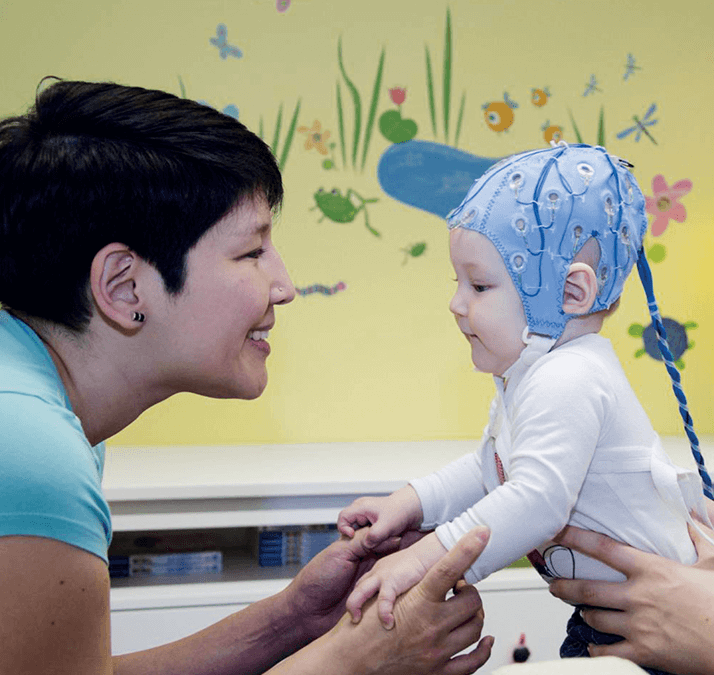
Eyes are important in social interactions. They’re the first and most influential feature we look at in other people’s faces (1), a critical component of reading others’ emotions (2), and instrumental in cooperative behavior (3). Human eyes, in particular, are unique in that the sclera is large and highly visible – and, because of this, it plays a big part in social and emotional cues. Wide eyes, for instance, indicate fear or surprise. We also use the sclera to determine where someone’s focus lies.
Our ability to read cues from the sclera is thought to facilitate many social and cooperative interactions, and is known to be hardwired into the adult human brain. Until now, though, it has been unclear whether or not the ability to read and process these cues exists in early development.
To find out, researchers from the Max Planck Institute in Germany and the University of Virginia in the US measured the brain responses of seven-month-old infants to a selection of different eye expressions (4). The infants were shown images of wide and narrowed eyes with direct and averted gazes while their brain activity was measured by electroencephalography. The images were shown for only 50 milliseconds – far less time than necessary to consciously perceive visual information. The infants in the study exhibited more brain activity in response to “fearful” eyes with visible sclera than to “non-fearful” eyes, and responded more to direct gazes than averted gazes. “This demonstrates that, like adults, infants are sensitive to eye expressions of fear,” says Tobias Grossmann, study co-author and director of the Early Social Development Group at the Max Planck Institute for Human Cognitive and Brain Sciences. “Their brains clearly responded to social cues conveyed through the eyes, indicating that even without conscious awareness, human infants are able to detect subtle social cues.”
Though infants respond sensitively to eye cues from birth, characteristics such as eye orientation decline quickly in those later diagnosed with social deficits like autism. This study shows for the first time that responses such as fear and gaze detection occur subconsciously and that they are based on scleral signals only possible in human eyes. The existence of infants’ responses to eye cues, says Grossmann, “likely provides a vital foundation for the development of social interactive skills.”
References
- M. Bindemann, C. Scheepers and A. M. Burton, “Viewpoint and center of gravity affect eye movements to human faces”, J. Vis., 9, 1–16, (2009). doi: 10.1167/9.2.7. S. Baron-Cohen et al., “The ‘Reading the Mind in the Eyes’ test revised version: a study with normal adults, and adults with Asperger syndrome or high-functioning autism”, J. Child Psychol. Psychiat., 42, 241–251, (2001). M. Ernest-Jones, D. Nettle, M. Bateson, “Effects of eye images on everyday cooperative behavior: a field experiment”, Evol. Hum. Behav., 32, 172–178, (2011). S. Jessen, T. Grossmann, “Unconscious discrimination of social cues from eye whites in infants”, Proc. Natl. Acad. Sci. Epub ahead of print (2014).
